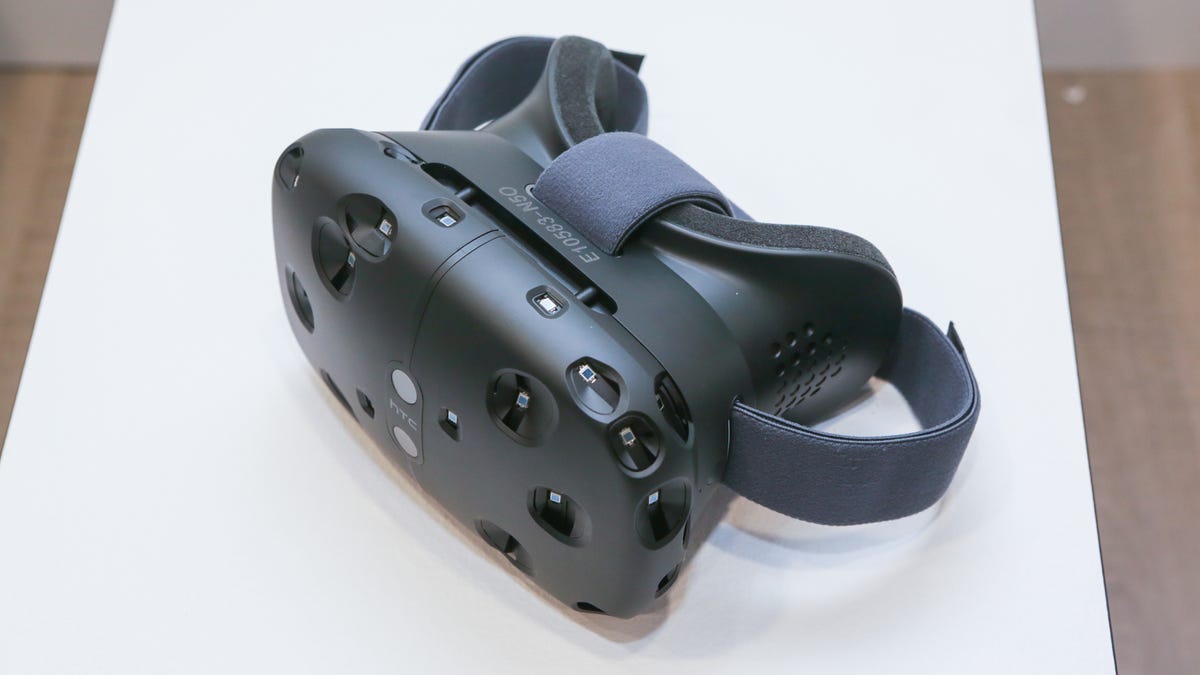
Valve's VR journey
Valve has spent a few years working on its Virtual Reality experience, and it's finally taking shape. But the company has also offered a look back at the road it took to get here.
Fiducial-based Positional Tracking
This funky little camera was the heart of Valve's first foray into virtual reality. Head-mounted machine vision cameras were aimed at markers that sort of look like QR codes. This would help figure out a user's physical orientation. This style of tracking -- better known as the AprilTags system -- is rather popular for things like augmented reality.
A telescopic prototype
This display prototype also used fiducial-based tracking, and served as a kind of telescope for peering into a virtual space. Valve describes the experience as akin to "looking through an empty tube at a different three-dimensional space." Most importantly, latency was pretty low: Valve claims that the lag in this unit was about 4 milliseconds, which would make for a smooth (if awkward) experience.
An AMOLED panel prototype
The telescope proved a success, which meant it was time to figure out a display someone would actually want to use. AMOLED panels offered fast switching times, but weren't quite right for what Valve was hoping to achieve.
Team Fortress 2, VR Edition
What good is a gaming VR prototype without some games to play? And what better candidate that Team Fortress 2, which has a VR Mode that debuted as a beta back in March 2013.
An early headset prototype
This prototype was one of the first to combine panels Valve was satisfied with and fiducial-based positional tracking. It would also be one of the models used to convince hardware and software developers to get on board.
Valve experiments with lasers
There was a glaring problem with fiducial-based tracking: you'd need to cover your walls or playspace with those funky, QR-like tags, which probably wouldn't fly in the average household. Valve had other designs in mind, and settled on a laser-tracking system. This prototype was cobbled together from a pair of hard drives.
Desktop-based dot tracking
Here's another tracking prototype: a stationary machine vision camera would keep track of a known pattern of dots. Move the dots, and the camera would know where in space the object was.
Desktop-based dot tracking controller
The desktop dot tracking system allowed Valve to experiment with controllers: this prototype features a dot pattern attached to a Steam Machine controller. A little unwieldy, but an interesting way to get an input device in on the action.
Valve's first laser-tracked headset prototype
This headset has laser-tracking sensors glued on. When zapped with lasers from the accompanying base station, the entire system would be able to figure out where the user was.
Laser-tracking base station prototype
This is one of the first base stations Valve developed: it shoots lasers at the headset to establish your position and orientation.
Laser-tracked Steam Machine controller
Valve hadn't yet given up on input devices. This particular prototype attaches laser sensors to the familiar Steam Machine controller.
The V Minus-1 headset
This laser-tracked prototype headset integrates laser-tracking sensors for a cleaner look, and was the prototype that most of the developers creating content for GDC have worked with. It's called the V Minus-1 because the HTC prototype is known as the V Zero. That little box on the right is an evolved version of the base station.
See all CNET's GDC 2015 coverage here.
The Steam VR input devices
And here's what the Steam VR's input devices look like at the moment. You'll use a pair of them to poke and prod things in virtual worlds, with buttons and triggers arrayed along the body handling interaction.
The miniaturized laser-tracking base station
This is one of the latest versions of the laser base station that'll beam lasers at your face, and close to the models that'll ship with the Steam VR developer kits. There's no word on when Steam VR will be available, but it's been phenomenal ride thus far.

